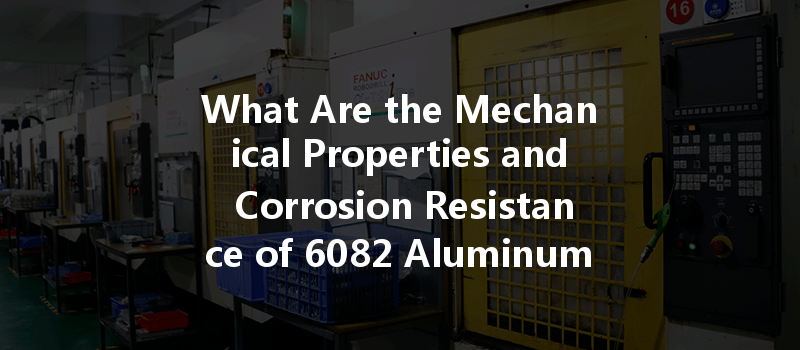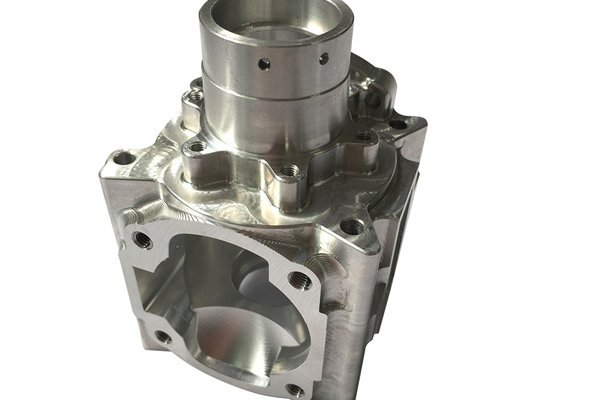Opening
Did you know that aluminum is one of the most widely used metals in the world due to its excellent properties, including lightweight, durability, and resistance to corrosion? Among the various aluminum alloys, 6082 aluminum stands out for its mechanical properties and versatility in CNC machining. As industries increasingly turn to advanced manufacturing techniques, understanding the characteristics of this alloy becomes crucial for engineers, designers, and manufacturers.
Understanding 6082 Aluminum
Before delving into the mechanical properties and corrosion resistance of 6082 aluminum, it’s essential to understand what this alloy is. 6082 is a medium-strength aluminum alloy primarily composed of aluminum, silicon, and magnesium. It belongs to the 6000 series of aluminum alloys, known for their good corrosion resistance and excellent weldability, making them a popular choice in various constructions and engineering applications.
Mechanical Properties of 6082 Aluminum
Tensile strength is a critical property when considering materials for construction and manufacturing. 6082 aluminum offers a tensile strength of approximately 310 MPa (megapascals). This medium strength allows for the construction of sturdy structures while remaining lightweight.
Yield strength is another vital aspect, indicating how much stress the material can withstand without undergoing permanent deformation. For 6082 aluminum, the yield strength is around 260 MPa, making it suitable for applications where strength is necessary, such as in building frames and bridges.
Elongation refers to the ability of a material to deform under tensile stress. 6082 aluminum exhibits an elongation percentage of about 10-12%, allowing it to be shaped and manipulated easily during the CNC machining process.
The hardness of 6082 aluminum varies depending on its temper; however, it typically ranges from 60 to 80 Brinell hardness numbers (BHN). This hardness makes it suitable for applications requiring abrasion-resistant materials.
Fatigue strength is a crucial parameter for parts subjected to cyclic loading. 6082 aluminum exhibits good fatigue strength, making it a viable option for applications with repeated stress cycles, such as in automotive and aerospace components.
Corrosion Resistance of 6082 Aluminum
Corrosion resistance is one of the most significant advantages of 6082 aluminum. The alloy is known for its excellent resistance to atmospheric corrosion, which is vital for structures exposed to the elements.
The primary reason for the corrosion resistance is the formation of a thin, protective oxide layer on the surface of the aluminum. This layer acts as a barrier, preventing moisture and other corrosive agents from reaching the underlying metal.
For applications where additional protection is necessary, anodizing is a widely used process that enhances the natural oxide layer, resulting in increased durability and corrosion resistance. Anodized 6082 aluminum is often used in marine applications and architectural structures.
When compared to other metals, 6082 aluminum showcases remarkable anti-corrosion properties. Its resistance to pitting and stress corrosion cracking makes it a reliable choice for environments that could cause other materials to deteriorate rapidly.
CNC Machining with 6082 Aluminum
With an understanding of the mechanical properties and corrosion resistance of 6082 aluminum, it’s essential to consider how CNC machining plays a role in utilizing this alloy.

6082 aluminum exhibits good machinability, making it compatible with various CNC machining processes. Its properties allow for high cutting speeds and maintains tool life, ultimately leading to a reduction in production costs.
When machining, choosing the right cutting speed and feed rate is crucial. For 6082 aluminum, it is typically recommended to use moderate speeds with proper lubrication to avoid overheating, which can compromise the mechanical properties.
Achieving the desired surface finish is essential for the functionality and aesthetics of the machined part. CNC machining can produce fine surface finishes on 6082 aluminum, especially when using appropriate tooling and techniques.
The properties of 6082 aluminum allow for intricate designs without compromising structural integrity. Engineers can take advantage of the alloy’s capabilities to create complex parts and components that can withstand significant loads.
The use of 6082 aluminum in CNC machining spans various industries, including aerospace, automotive, construction, and marine applications. Understanding its mechanical properties and corrosion resistance makes it a preferred choice for manufacturers.
Challenges in CNC Machining 6082 Aluminum
While 6082 aluminum is favored for many applications, it’s important to recognize the challenges that can arise during CNC machining.
Due to its hardness, CNC machine tools can experience significant wear when cutting 6082 aluminum. Using high-speed steel or carbide tools and optimizing tool paths can mitigate this issue.
Excessive heat during machining can lead to warping or alteration of mechanical properties. Implementing effective cooling techniques, such as using cutting fluids, can help maintain a consistent temperature.
Surface defects like scratches and dents can occur during the machining process. Operators should regularly maintain and calibrate CNC machinery to ensure precision and avoid these issues.
Considering the demands of production and available resources is crucial for ensuring consistency in the manufacturing process. Proper planning can help maintain quality and reduce lead times for 6082 aluminum components.
Understanding the mechanical properties and corrosion resistance of 6082 aluminum paves the way for informed decision-making in CNC machining processes. The combination of medium strength, excellent corrosion resistance, and machinability makes it a favored choice across numerous industries.
As manufacturing evolves, so do the materials and processes utilized. In an era where efficiency and quality are paramount, the insights on 6082 aluminum equip engineers, designers, and manufacturers to optimize their products effectively.
This blog is essential for anyone involved in a field that relies on aluminum, as it highlights the significance of selecting the appropriate material to meet application requirements while exploring the best practices in CNC machining. By understanding the unique properties of 6082 aluminum, stakeholders can leverage its benefits to create robust, reliable, and high-quality components.






